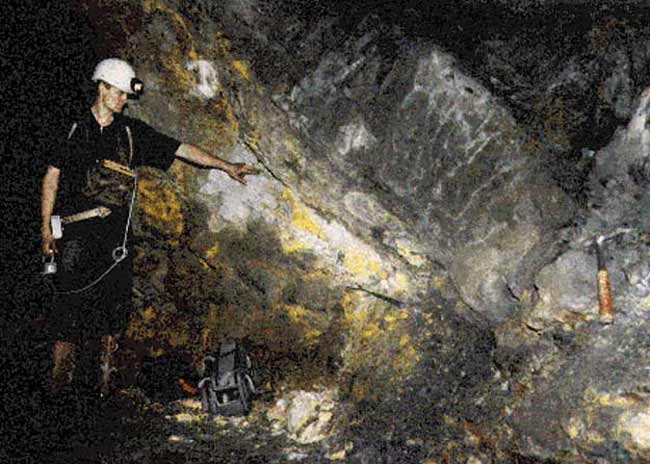Natural Nuclear Reaction Powered Ancient Geyser

With all the complicated engineering and physics needed to build a nuclear reactor, it is rather remarkable that one turned on spontaneously two billion years ago.
Evidence for this natural reactor was found in 1972 at the Oklo mine in the West African country of Gabon. New research confirms that water regulated the nuclear reactions in a cyclic pattern similar to that in a geyser.
Alex Meshik and his colleagues at Washington University of St. Louis have determined that the Oklo reactor, which comprises several separate sites, ran for 30 minutes and then shut off for 2.5 hours, before starting over.
"The time is characteristic of water infiltrating rocks and then being boiled off once reactions started," Meshik told LiveScience.
When the water all boiled away, the reactions stopped until new water percolated back down. This geyser-like activity also prevented a runaway reaction.
"It's amazing it didn't explode," Meshik said. "Instead it released energy in short pulses."
More power than ...
Sign up for the Live Science daily newsletter now
Get the world’s most fascinating discoveries delivered straight to your inbox.
It has been estimated that the Oklo reactor ran for 150,000 years. The average power output was 100 kilowatts, which is about 10,000 times less than a modern nuclear power plant. Over its entire running time, the reactor put out the energy equivalent of one hundred Megaton bombs.
The nuclear fuel at Oklo was uranium - specifically U-235, which is lighter than the most common version, or "isotope," of uranium, U-238. Currently, U-235 only makes up about 0.7 percent of the uranium naturally found on Earth. To run a man-made nuclear reactor, uranium has to be "enriched," such that U-235 makes up three percent.
Both U-235 and U-238 are radioactively unstable, which means their nuclei will eventually decay toward more stable nuclear configurations. There are a number of different decay processes - one of them being fission, when a nucleus breaks apart into two smaller nuclei. The opposite reaction, fusion, is when two smaller nuclei come together.
Because U-235 decays faster than U-238, there was a higher concentration of U-235 in the past. Two billion years ago, the ratio between U-235 and U-238 was above the three percent threshold, making the conditions right for natural reactors.
The higher U-235 concentration allows for a chain reaction, in which the fission of one U-235 induces the fission of another U-235, which induces another, and so on and so forth. This snowball effect is carried out by neutrons that fly out of one fission event and smack into neighboring nuclei - causing new fission events and more neutrons to fly out.
However, these neutrons are typically moving too fast for the chain reaction to happen, so something needs to slow them down.
Watered down reaction
Water is very good at slowing down neutrons. Although scientists had long suspected that water was important for the Oklo reactor, the idea was not confirmed until Meshik's team looked at levels of xenon gas in the uranium deposits.
They realized that this xenon could only be trapped in the deposits if the reactor shut off on a regular basis - hence the geyser analogy. These results were published in a recent issue of Physical Review Letters.
Although water and uranium are not unique to Oklo, no other natural reactor has ever been found.
"It's very strange that something happened only once in nature," Meshik said. "But Oklo is very unique."
He explained that, after the fission process had finished, a geological shift caused the Oklo reactor to sink a few miles below the surface - where it was preserved from erosion. A few million years ago, another shift brought the uranium deposits back to the surface.
Other reactors could have turned on two billion years ago, only to have their evidence washed away in the intervening eons.










